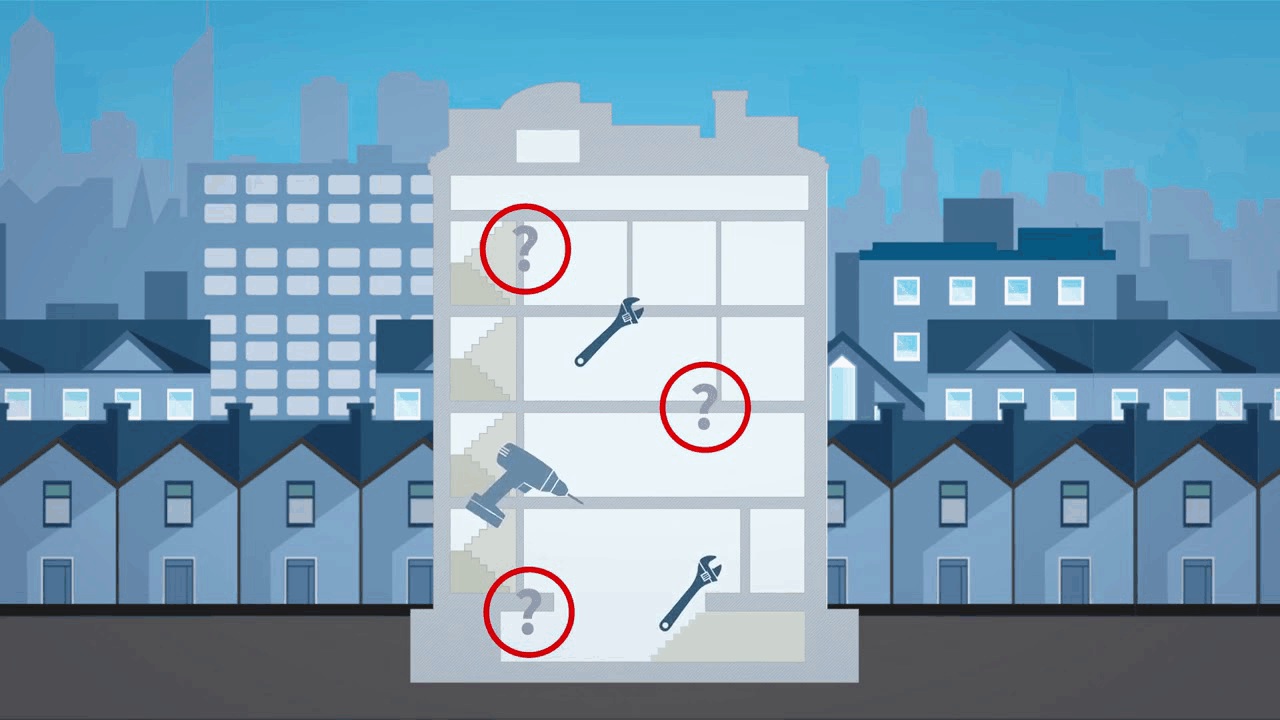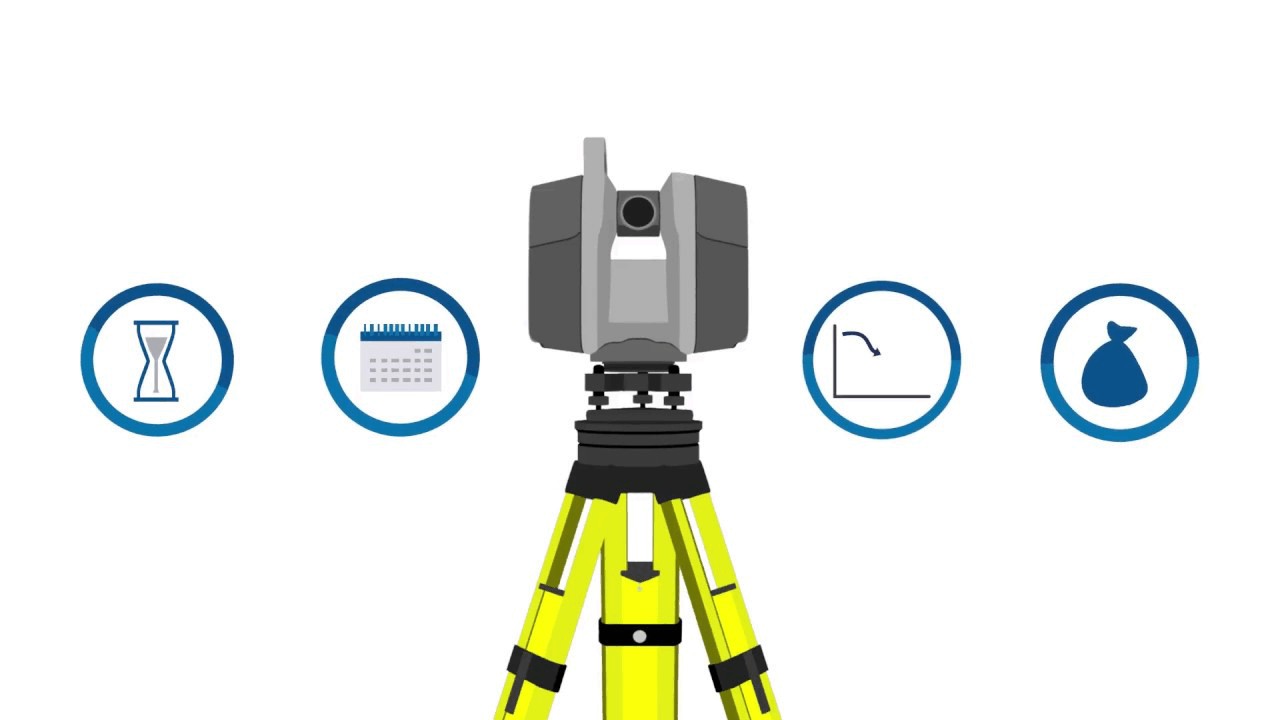Understanding how 3D laser scanning can benefit your construction business is an important step in improving your overall efficiency and profitability. 3D scanning allows you to gather accurate, detailed information about existing site conditions and as-builts, whether you’re embarking on a brand-new build, a renovation, or facility maintenance activities. With accurate project information, you can:
- Boost efficiency and productivity
- Communicate more effectively between field and office
- Avoid rework that can derail budgets and schedules
In doing your homework, you may also have determined that purchasing your own scanning solution—rather than outsourcing scanning to a technician or service provider—will give you the best return on investment.
But evaluating the different scanners on the market can feel overwhelming. For example, many scanning solutions are quite robust—and complicated to use—because they were built for long-range or geospatial capabilities. When it comes to scanners for AEC professionals, a mid-range, self-calibrating scanner that’s easy to learn and implement and requires minimal maintenance is often the better choice. A 3D scanner that’s easily used by team members with no specialized training required will provide the most versatility and pay for itself many times over.
Beyond these basic requirements, there are several other features to look for to ensure you’re getting the best scanner for your needs. Let’s take a closer look.
7 Capabilities to Prioritize in a 3D Laser Scanner
1. Time-of-flight (TOF) measurement
When your scanning needs are largely mid-range distances, beginning at a meter up to a kilometer, choosing a scanner with TOF measurement will give you the best high-definition scans with less data noise and a high degree of accuracy. In comparison, phase-based measurement in which the laser pulses faster is better suited for close-range measurements but can produce a higher amount of data noise with false returns from surface edges and reflections.
2. Auto-calibration capabilities
To ensure greater accuracy during scanning, you’ll want your scanner to have auto-calibration capabilities. This ensures each scan is being captured using the designed specifications of the instrument. Auto-calibration makes the scanner much easier to use and minimizes downtime by eliminating the need for annual service. Your maintenance costs and total cost of ownership are lower as a result.
3. In-field registration
Choosing a scanner with in-field registration ensures complete data collection and supports onsite workflows. Using a tablet controller, you can gather measurements of all points and build a registered composite point cloud right from the jobsite. You can also verify from the field that you’ve collected the data you need before you leave. This can eliminate the need for rescanning, an invaluable capability when site access is limited because of social and physical distancing.
4. In-field referencing and model verification
In addition to being able to register a point cloud in the field, being able to process, view, compare, and validate scan and data models in the field is also important. Choosing a scanner with integrated software that features in-field referencing to the building coordinate system and model verification allows you to uncover potential design or layout issues, solve problems, and make faster decisions on the spot.
5. High sensitivity time-of-flight electronic distance measurement
A scanner that uses high sensitivity time-of-flight electronic distance measurement can capture measurement data on black, reflective, shiny, or any other surfaces. Being able to scan all kinds of surfaces provides the most versatility and ensures you’re getting the most complete and accurate scan data for each project.
6. Automatic level detection
Choosing a scanner that uses automatic level detection ensures greater efficiency in the field and accuracy of the overall registration. You simply set up the scanner and start scanning knowing the level plane is determined for you automatically, rather than having to learn how to precisely level the tool yourself.
7. Integrated laser pointer
To better align your scan data with 3D constructible models used by design and construction teams, you’ll want to choose a scanner with an integrated laser pointer. This feature lets you register scans to the project coordinate system and provide basic field layout of points in the model. When your scans align with the project coordinate system in the field, the data shared after scanning will also align with the 3D models being used by the design and construction teams, eliminating error and the need for additional processing in the office.
Cloud Collaboration Improves Communication among Remote Teams
When you choose a 3D scanner that combines these capabilities with a cloud collaboration platform, you reap the additional benefits of better communication and streamlined workflows. You can use a 3D laser scanner to document as-is conditions on a project, whether at the start of a project, during construction, or for facilities management. The information captured by the 3D laser scanner can then be used to produce more accurate and constructible models that can also be shared across workflows, including layout, estimation, and more.
A cloud collaboration platform like Trimble Connect makes it possible to share models and project data with all stakeholders on a project. You’re able to share information from the office to the field and across project phases and trades. This connected construction approach ensures everyone involved has access to the information they need to make better and quicker decisions, resulting in streamlined operations and increased productivity across the supply chain.
Choosing a Powerful and Versatile 3D Scanner
Choosing a 3D scanner that provides these features and emphasizes ease of use and versatility will let you make scanning immediately accessible to your teams and beneficial to more workflows. When you’re able to put a 3D scanner directly into the hands of those who need the information the most, and make project data accessible to all stakeholders, you know you’ve made a wise investment.
To learn more about how you can choose the best 3D scanning solution to meet your needs, download the buyer’s guide.
About the Author
Follow on Linkedin Visit Website





![[On Demand] Cloud Engine, a point cloud software that has benefits across construction lifecycle](https://play.vidyard.com/krDXXSZc79pBq8qPSi6W2L.jpg)
![[On-Demand Webinar] - Scan Essentials by Trimble, modéliser à partir d'un nuage de points](https://content.cdntwrk.com/mediaproxy?url=https%3A%2F%2Fplay.vidyard.com%2FA8gbz15oHds6JLskjgic5C.jpg&size=1&version=1692731292&sig=26f2e76e220448d9bb5042f0e684237c&default=)
![[On demand webinar] Laser Scanning Myths Busted for Mechanical & Electrical Professionals](https://content.cdntwrk.com/mediaproxy?url=https%3A%2F%2Fplay.vidyard.com%2FEbAQRaubYhCRh1H5qdMoYZ.jpg&size=1&version=1692731300&sig=67ee3bbda98878ba84acb3d96b1ce197&default=)













